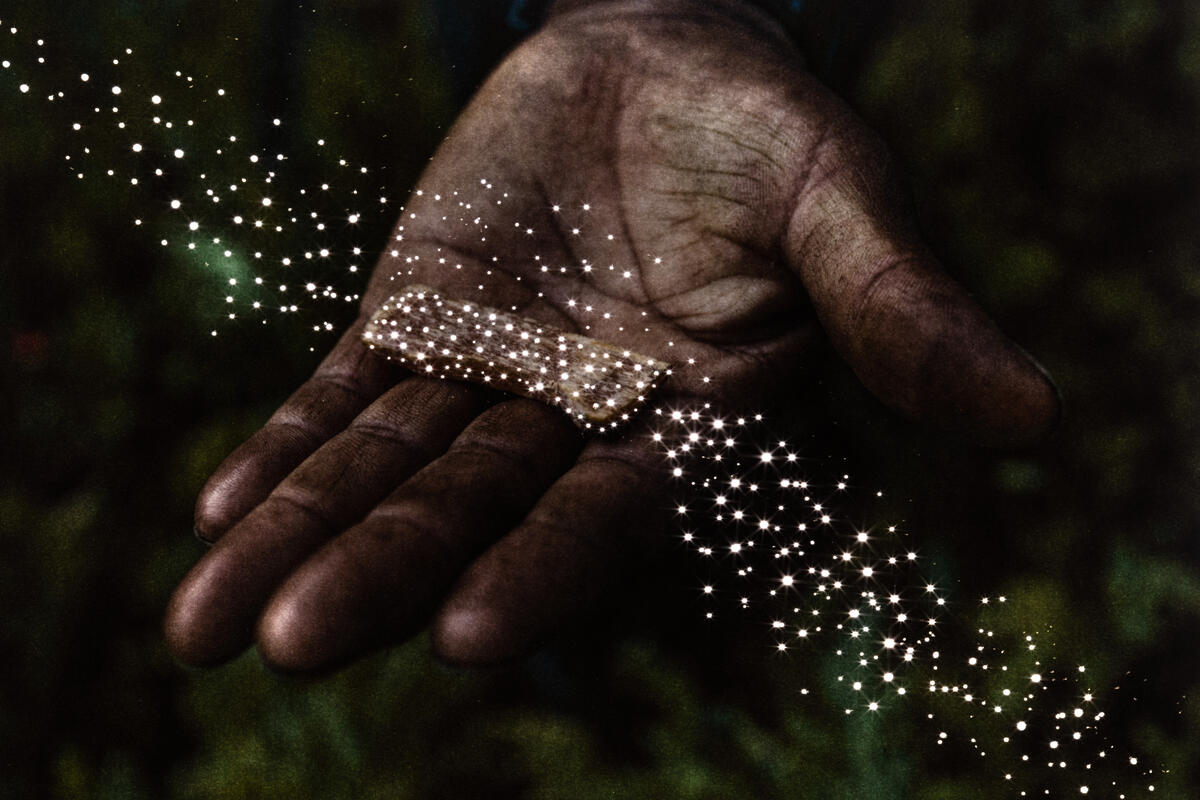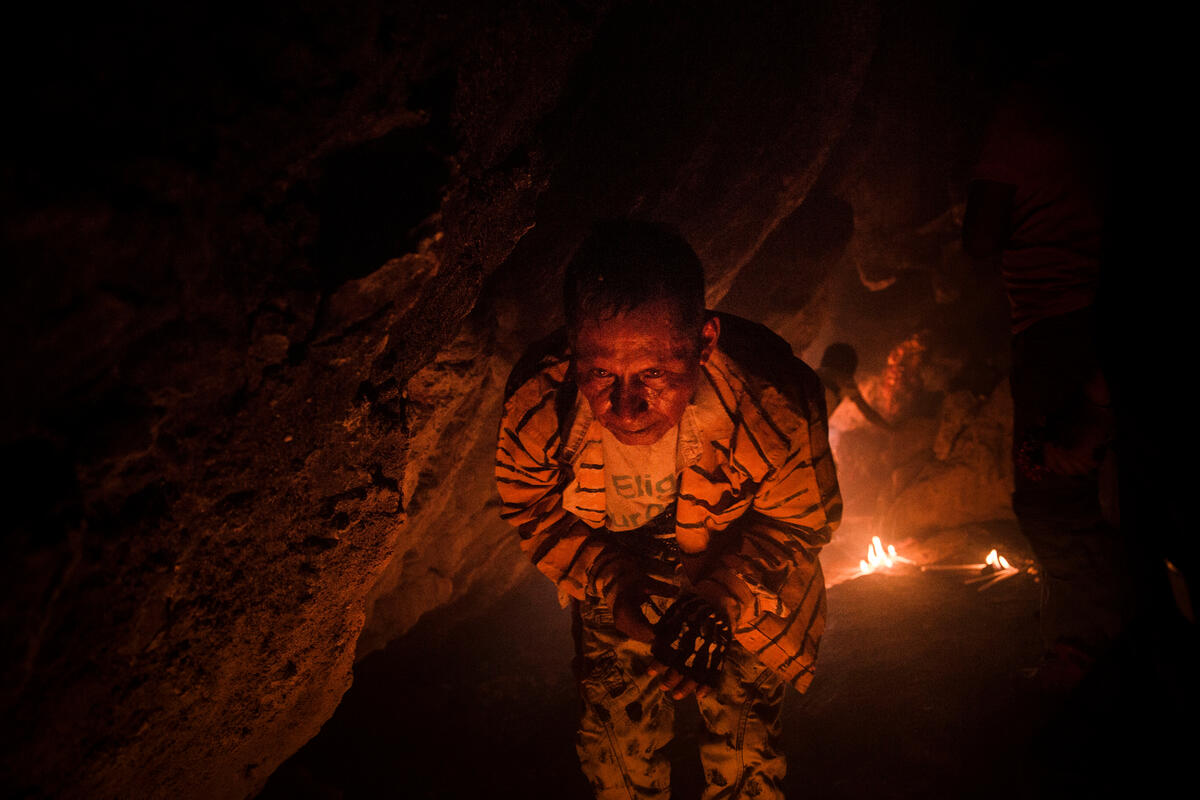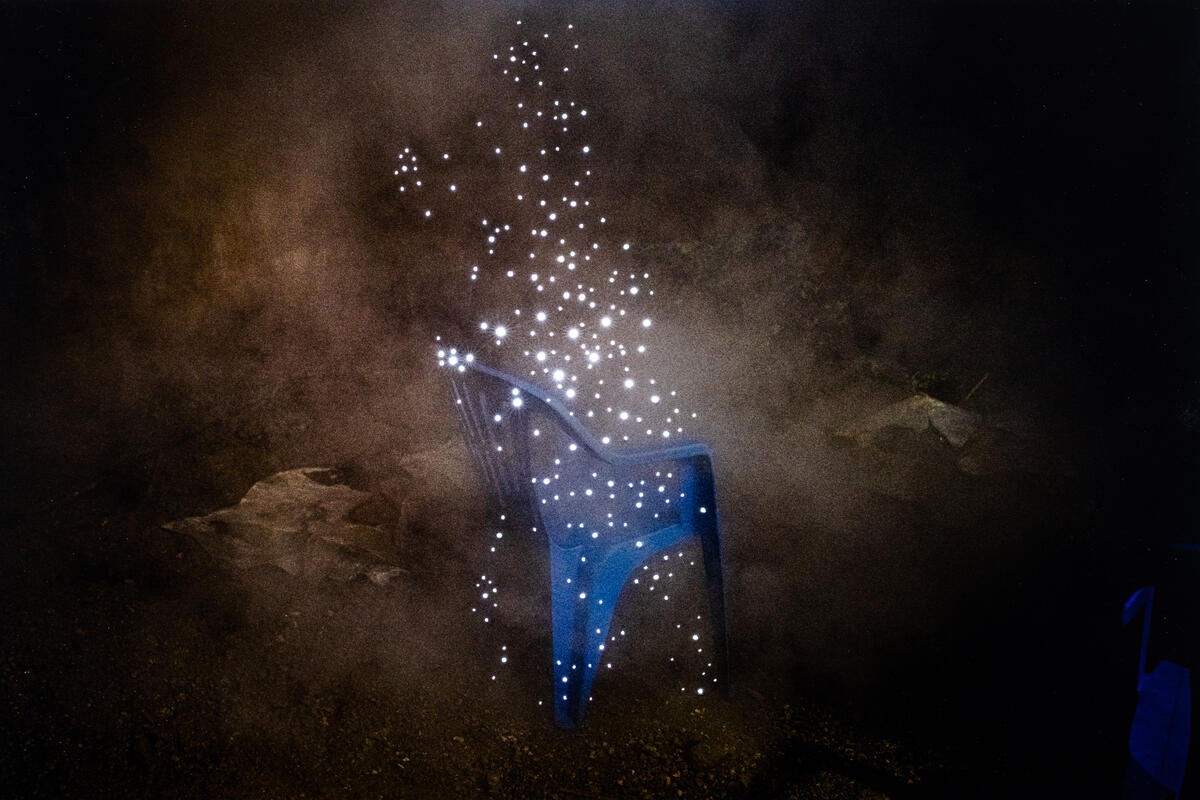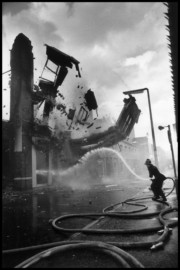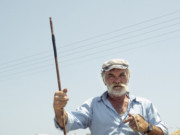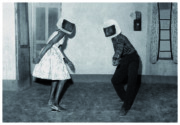Illuminating Absence and Community Through Photography
Yael Martínez’s latest photobook meditates on disappearance and resilience in Mexico by shining light on trauma, memory, and hope through transformation
On May 5, a crowd of friends, collaborators, and supporters gathered to hear Yael Martínez speak at Magnum Foundation in Manhattan’s East Village. A longtime grantee and a fellow of the Photography and Social Justice Program, he acknowledged the significance of returning to the space. “Every time I come here,” he said, “I feel like Magnum Foundation is my community and my home.”
The occasion was a presentation of Luciérnagas (Fireflies), Martínez’s latest book, a luminous volume that transforms personal grief and national trauma through rituals of resilience and memory. As he spoke, Martínez displayed the same vulnerability, compassion, and vision that animates much of his work.
Published by This Book Is True, the book is an intimate but sprawling visual essay that contends with the pervasive violence of Mexico’s Guerrero state and the irreparable wounds and voids left behind by people who’ve been forcibly disappeared.
The project began in 2013, when three members of Martínez’s own family went missing. What followed was a journey, both geographic and emotional, into the systemic violence that has gripped Mexico and other Latin American countries for decades. Martínez embedded himself with other families of the disappeared, documenting their pain and dignity over several years.
Exhausted by the darkness inherent to this work, Martínez turned to ritual. “I started offering things to the Earth,” he recalled. “Flowers, mezcal… But my friend asked me: ‘What is it you really want to offer?’ And I realized, photography was what I had.”
" I started offering things to the Earth, flowers, mezcal… But my friend asked me: ‘What is it you really want to offer?’ And I realized, photography was what I had."
- Yael Martínez
Between 2019 and 2023, Martínez began physically intervening in his photographs by piercing the prints and backlighting them. The resulting images shimmer: rays of light bursting through the darkness. This intuitive piercing, literal and symbolic, marks a shift in Martínez’s approach. Where his earlier work was more straightforward documentation, Luciérnagas moves toward transformation as praxis. Piercing is just one way Martínez intervenes in his photographs.
These illuminations, as Martínez describes them, deal with trauma through the possibility of its transmutation. They suggest that the wounds inflicted by violence do not only scar or debilitate — they radiate, persist, and sometimes even offer guidance. It’s a visual language that feels somehow ancient and futuristic. “I was trying to find hope,” he explained. “To show how people in these territories resist.” These images, layered with diaristic writing and poetic gestures, make up Luciérnagas.
The book opens with a poem by the late Mayan poet Isaac Carrillo Can. In it, a child sacrifices fireflies on his skin to illuminate his spirit. The poem closes: “Now, / when / the darkness enfolds me, / I am a firefly / recalling its grandmother.” For Martínez, the poem encapsulates the reality he and others are currently facing in Mexico.
Critic and writer Oswaldo Zavala, speaking alongside Martínez, noted the book’s refusal to conform to traditional categories. Zavala called Luciérnagas “an essay on resilience,” blending journalism, poetry, biography, and visual art. “You intervene across all these fields simultaneously,” he observed. Resisting simple classification. Some images are quiet, like a group of children walking in fog, perhaps lost, perhaps returning home; others confront us more directly, like an eye that refuses to see, or has seen too much.
Martínez does not show human death directly in Luciérnagas, but its ubiquity is felt in or at the margins of every frame. A vase filled with paper money and faded flowers is surrounded by vigil candles. A woman mourns at a gravesite. A man turns away from fire in a cave. A couple kisses in the night. These images are as much about loss as about what survives it — gestures of love, community, and persistence.
Throughout the book, fireflies recur as a visual motif by way of the piercings. Sometimes they cluster like constellations, at other times they resemble the glow of cell phones held aloft at a political event. And at other times still they vanish altogether, as if even light itself can be overwhelmed by tragedy or sorrow. However, perseverance and healing, not despair, bind these images together.
In its final image, a woman stands alone, her face turned from the camera. She is grieving or perhaps finished grieving while the fireflies, the stardust, the spirits shine from her figure.
"The past is never dead. It’s not even past."
- William Faulkner
“I have more questions than answers,” Martínez admitted when asked where his work goes next. “I’m working on a new chapter, on time, on history, on how the past is always repeating.” He wants to explore how memory returns and how trauma echoes across generations. In his vision, sacrifice is not only tragedy — it is a structure, a cycle, a myth that must be interrogated and maybe even undone.
“The past is never dead,” Zavala quoted William Faulkner toward the end of the evening. “It’s not even past.”
And in Luciérnagas, we see this truth written in light — light that rejects extinction. History illuminates the darkness of our present like fireflies pulsing through the night, invigorating the hands, hearts, and eyes of the living.
The event was presented in conjunction with Magnum Foundation, Magnum Photos, CUNY Mexican Studies Institute, and This Book Is True.
Martínez is one of the three tutors leading a workshop at Magnum Learn’s annual photography festival, Inside>>Out, in Philadelphia in April 2026. Leading a workshop titled Photography as Transformation: From Capture to Collage, Martínez will share exclusive insight into his unique photography as a form of expression, and help participants break free from traditional photographic boundaries. Find out more and book your spot here.


